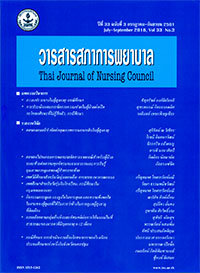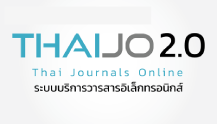Frailty in Older Adults: A Case Study
Keywords:
case study, disability, frailty, nurse-led Interdisciplinary team, older adultsAbstract
This article presents an analysis of a case study of frailty in older adults dwelling
in community. The analysis was based on a review of literature concerning the defnition
of frailty, screening and diagnosis, risk factors, and management of frailty in older adults.
According to the analysis presented herein, the article proposes that nurses should serve
as case managers and nurse-led interdisciplinary team specialists to properly manage
this condition.
Frailty is a common geriatric syndrome that is not caused by usual degenerative
conditions. It results in inability to cope with stress and could cause such undesirable
outcomes as diseases, disabilities, and physical, psychological, and social vulnerabilities,
leading to frequent hospitalization, high health expenditure and medical expense per
capita, and increased mortality rate. Frailty can be prevented if health is promoted and
restored before the onset of disability. Screening of frailty in older adults, which is
performed using various multidimensional instruments, is based upon the presence of
three or more of fve phenotypes, namely, muscle weakness, walking at an unusually
slow pace, low level of physical activities, exhaustion, and unintentional weight loss.
Regarding the present case study, frailty was found amongst illiterate, older female
aged higher than 80 with low socio-economic status and insuffcient income, who had
three or more underlying diseases, used four or more medications, received little support
from their family or community, pursued unhealthy lifestyle, and lived in environments
neither physically nor socially friendly to older adults. The gerontological nurses play
an important part of nurse-led role in coordinating effcient management on risk factors
that contribute to physical, psychological, and environmental aspects, in order to prevent
or delay frailty or reduce its severity.
References
public health priority. J Am Med Dir Assoc. 2016; 17(3):188-92.doi:10.1016/j.jamda.2015.12.016.
2. Foundation of Thai Gerontology Research and Development Institute (TGRI). Situation of the Thai elderly 2015 [internet]. Bangkok: Foundation of Thai Gerontology Research and Development Institute; 2017 [cited 2018 April 18]. Available from: https://thaitgri.org/?p=37841. (in Thai).
3. Stolz E, Mayerl H, Waxenegger A, Rasky E, Freidl W. Impact of socioeconomic position on frailty trajectories in 10 European countries: evidence from the survey of health, ageing and retirement in Europe (2004-2013). J Epidemiol Community Health. 2017;71(1):73-80. doi:10.1136/jech-2016-207712.
4. Gobbens RJ, van Assen MA, Luijkx KG, WijnenSponselee MT, Schols JM. Determinants of frailty. J Am Med Dir Assoc 2010;11(5):356-64. doi: 10.1016/j.jamda.2009.11.008.
5. Strandberg TE, Pitkälä KH, Tilvis RS. Frailty in older people. Eur Geriatr Med 2011;2(6):344-55. doi:10.1016/j.eurger.2011.08.003.
6. Fried LP, Tangen CM, Walston J, Newman AB, Hirsch C, Gottdiener J, et al. Frailty in older adults: evidence for a phenotype. J Gerontol A Biol Sci Med Sci 2001;56(3):M146-56.
7. Chen X, Mao G, Leng SX. Frailty syndrome: an overview. Clin Interv Aging 2014;(9):433-41.
doi:10.2147/CIA.S45300.
8. Dent E, Dal Grande E, Price K, Taylor AW. Frailty and usage of health care systems: results from the
South Australian Monitoring and Surveillance System (SAMSS). Maturitas. 2017;104:36-43. doi: 10. 1016/j.maturitas.2017.07.003.
9. Ministry of Social Development and Human Security (MSDHS). 2006 Survey of Vulnerability of Thai
Elderly. [cited 2018 June 1]. Available from http: //www.m-society.go.th/main.php?filename= index. (In Thai).
10. Metzelthin SF, Daniels R, van Rossum E, Cox K, Habets H, de Witte LP, et al. A nurse-led interdisciplinary primary care approach to prevent disability among community-dwelling frail older people: a large-scale process evaluation. Int J Nurs Stud. 2013;50(9): 1184-96. doi:10.1016/j.ijnurstu.2012.12.016.
11. Clegg A, Young J, Iliffe S, Rikkert MO, Rockwood K.Frailtyinolderpeople.Lancet2013;381(9868): 752-62. doi:10.1016/S0140-6736(12)62167-9.
12. Bagshaw SM, Stelfox HT, McDermid RC, Rolfson DB, Tsuyuki RT, Baig N, et al. Association between frailty and short- and long-term outcomes among critically ill patients: a multicentre prospective cohort study. CMAJ. 2014;18 (2):E95-102. doi:10. 1503/cmaj.130639.
13. Bieniek J, Wilczynski K, Szewieczek J. Fried frailty phenotype assessment components as applied to geriatric
inpatients. Clin Interv Aging. 2016;11: 453-9. doi: 10.2147/CIA.S101369.
14. Rolfson DB, Majumdar SR, Tsuyuki RT, Tahir A, Rockwood K. Validity and reliability of the Edmonton Frail Scale. Age Ageing 2006;35(5):526-9. doi:10.1093/ageing/afl041.
15. Cramm JM, Nieboer AP. Relationships between frailty,neighborhood security, social cohesion and sense of belonging among community-dwelling older people.Geriatr Gerontol Int. 2013;13(3):759-63. doi:10.1111/j.1447-0594.2012.00967.x.19
16. Gobbens RJJ, Schols JMGA, van Assen MALM. Exploring the effciency of the Tilburg Frailty Indicator: a review. Clin Interv Aging. 2017;12:1739-52. doi:10.2147/CIA.S130686.
17. Coelho T, Paúl C, Gobbens RJ, Fernandes L. Frailty as a predictor of short-term adverse outcomes. PeerJ.
2015;3:e1121. doi: 10.7717/peerj.1121.
18. Chen CY, Wu SC, Chen LJ, Lue BH. The prevalence of subjective frailty and factors associated with frailty
in Taiwan. Arch Gerontol Geriatr 2010;50(Suppl1): S43-7. doi:10.1016/S0167-4943(10)70012-1.
19. Rockwood K, Song X, MacKnight C, Bergman H, Hogan DB, McDowell I, et al. A global clinical measure of ftness and frailty in elderly people. CMAJ 2005;173(5):489-95. doi:10.1503/ cmaj.050051.
20. Woo J, Zheng Z, Leung J, Chan P. Prevalence of frailty and contributory factors in three Chinese populations with different socioeconomic and healthcare characteristics. BMC Geriatr 2015;15:163. doi:10. 1186/s12877-015-0160-7.
21. Collard RM, Boter H, Schoevers RA, Oude Voshaar RC. Prevalence of frailty in community-dwelling older persons: a systematic review. J Am Geriatr Soc. 2012;60(8):1487-92. doi:10.1111/j.1532-5415.2012.04054.x.
22. Suijker JJ, van Rijn M, Buurman BM, Ter Riet G,Moll van Charante EP, de Rooij SE. Effects of nurse-led
multifactorial care to prevent disability in communityliving older people: cluster randomized trial. PLoS One. 2016;11(7):e0158714. doi:10.1371/journal.pone.0158714.






